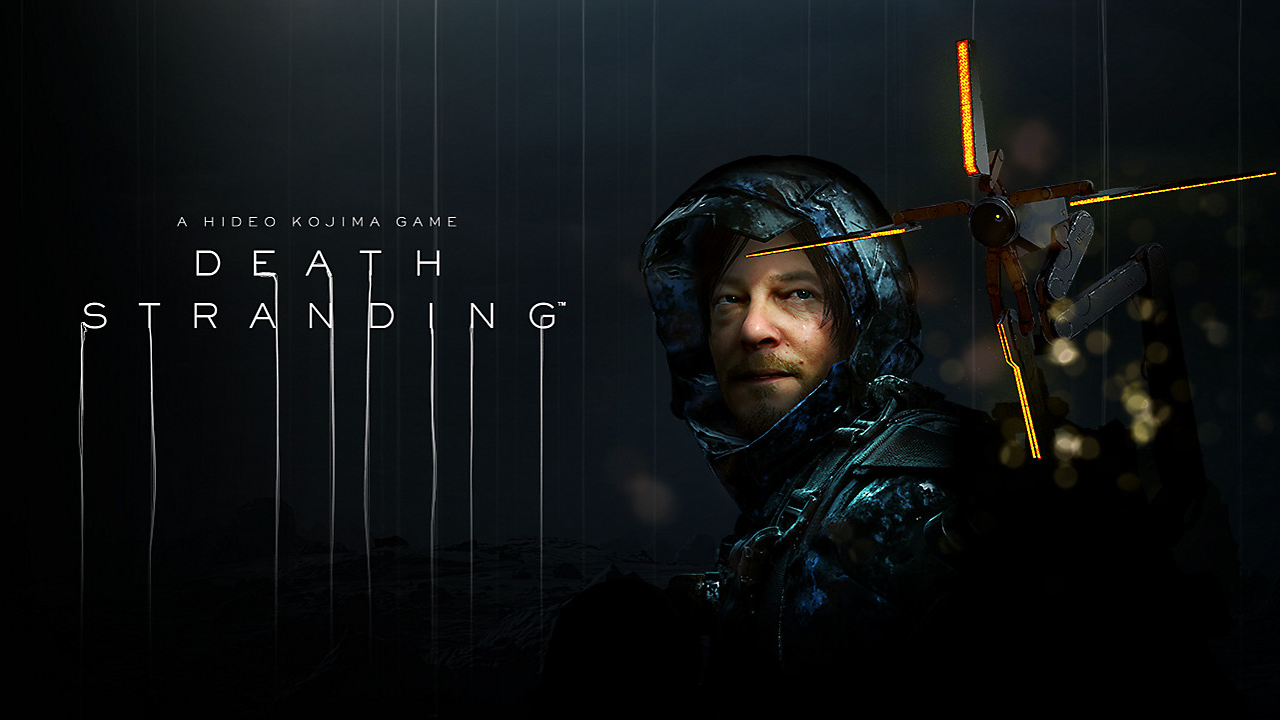
The hype cycle for Death Stranding was absolutely bonkers. You would be forgiven for thinking Kojima was some sort of messiah based on the reactions of his dedicated fanbase–every new kernel of information released about the game had people going buck wild, ensorcelled by the mystery the ex-Konami creator was weaving in trailers before launch. Now that it’s finally here, though, does Death Stranding even come close to living up to its own insane hype?
Death Stranding
Publisher: Sony Interactive Entertainment
Developer: Kojima Productions
Platforms: PlayStation 4 (Reviewed)
Release Date: November 8th, 2019
Players: 1
MSRP: $59.99
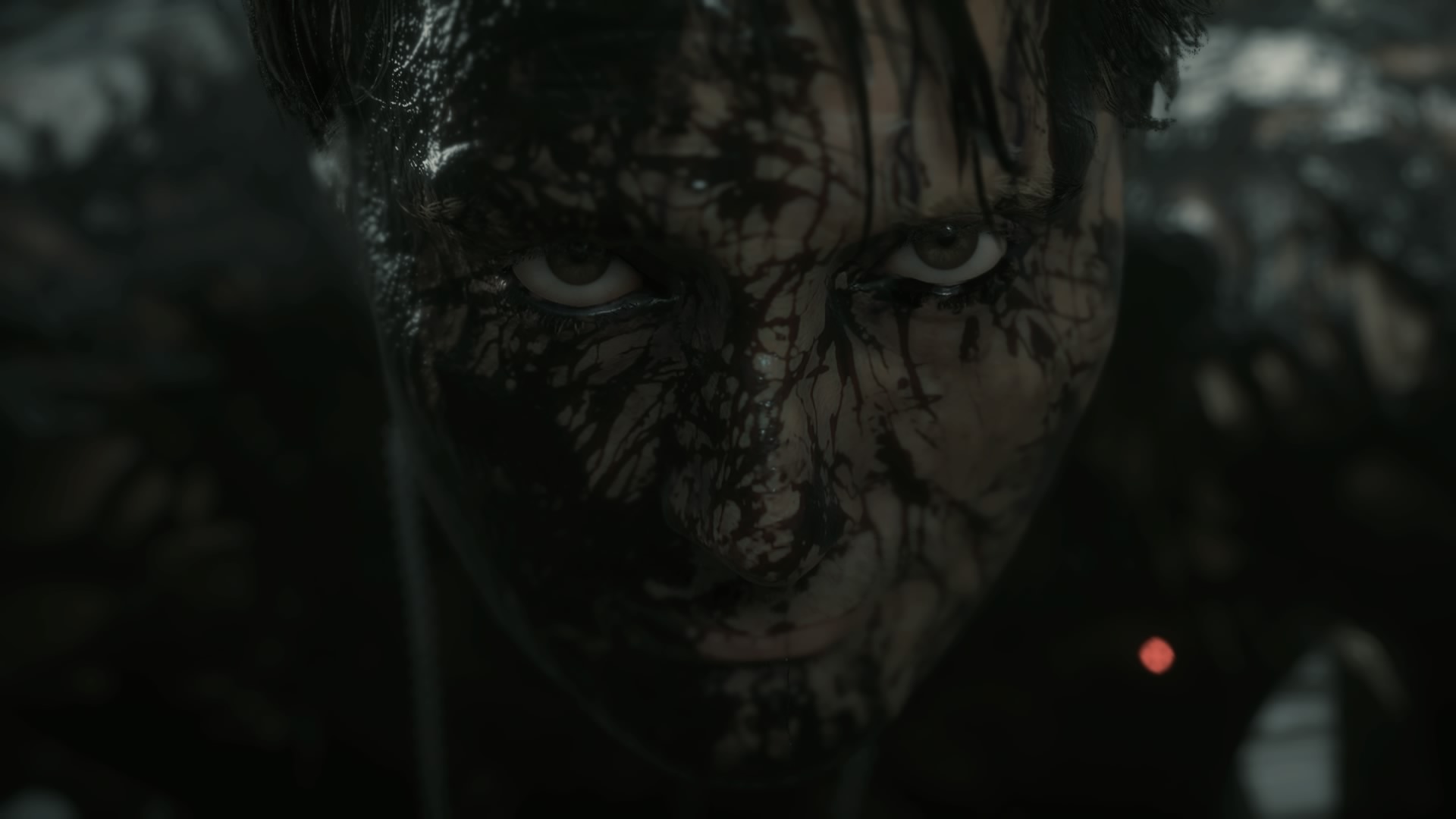
The short answer is no. I’ll preface this review by revealing a fact about myself: I have played and enjoyed every Metal Gear Solid game, and could be considered a huge fan of the series. While never a full-blown Kojima sycophant, I acknowledge that he’s been a large part of some of my favorite games throughout the years, and held him in high regard as a result.
However, when I was watching all the trailers and information coming out about Death Stranding, I started feeling a bit nervous. Kojima was very cagey with revealing info about the game, which added this air of mystery around some of the concepts shown in promotional material. This was intriguing to some, but I started to find it irritating once it was a few months out from release and still had barely shown gameplay footage.
In essence, Death Stranding is a post-apocalyptic Amazon Prime simulator. You play as Sam Porter Bridges (played by Norman Reedus of The Walking Dead fame), a fact that you’re not likely to forget, as the game says his full name every three seconds. The Death Stranding, a big spooky extinction event, has wiped out all of America’s infrastructure, and it’s your job to run across the game world and reconnect everyone.
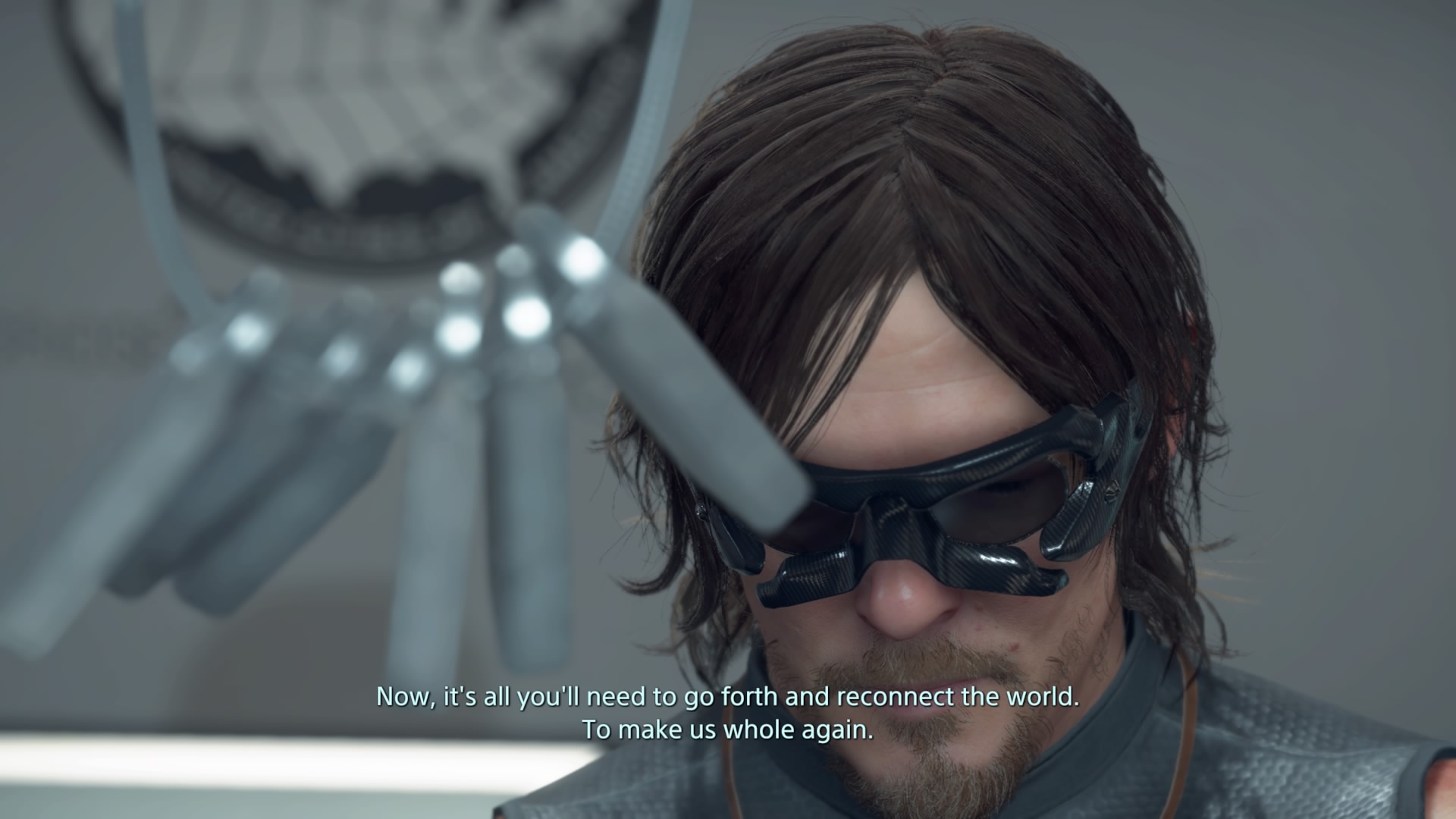
Death Stranding’s gameplay is definitely its most controversial facet. Unlike Kojima’s previous works, which were mostly action-focused stealth games, this title is quite literally one big fetch quest. Someone in East Jabib wants you to deliver a 55 gallon drum of Astroglide to his friend in West Jabib, so you strap that sucker to your back and trek all the way there.
The game world is large, with many obstacles to make delivery a bit more difficult. Rocky terrain, snow, rivers, and the occasional enemy bar your path, but with some creativity, you can get around just about anything. What Death Stranding does well is a steady drip-feed of new gadgets, which allow you to traverse the world just a little bit easier.
Getting the Reverse Trike is the first real breakthrough, as instead of running all the way to your destination, you can drive and make it there in half the time. The catch, however, is that your Trike’s battery power is limited, and it gets hung up on rocky terrain. It also drains power faster when driving through rivers.
Then you get a truck, which allows you to load a metric ass-load of cargo into it. You’d think this would be great, but you’d be wrong. The truck is a giant, dumpy piece of crap, and it gets stuck on just about every bit of terrain imaginable. I had three different trucks become completely inoperable due to getting jammed up on some rocks, and had to abandon them. Don’t use the truck.
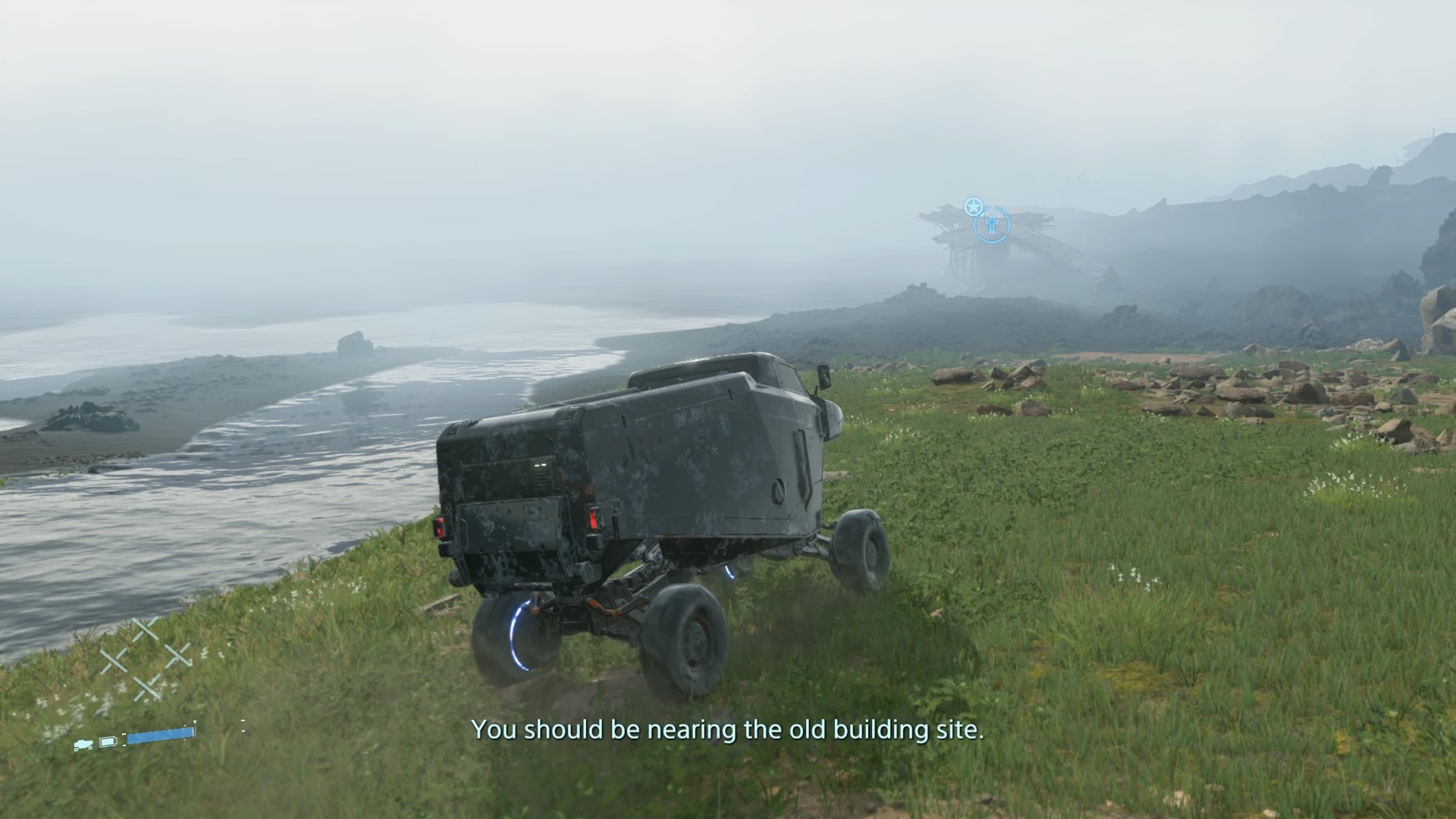
From here, the game keeps rewarding your successful deliveries with new stuff, varying from useless to insanely helpful. Having trouble with snow? Try an All-Terrain Exoskeleton on, and you’ll be zooming right through. Too much cargo making your footing unsteady as you run along? Get some robo-drones to float behind you and do the heavy lifting for you.
Death Stranding has a mechanic where, if you’re carrying too much cargo on your back, your load will shift and require you to pull it back up, lest you topple over and damage your precious deliveries. This gets worse when trekking over rough terrain, and it can become annoying extremely quickly. Thankfully, riding on a vehicle or taking the Power Exoskeleton with you alleviates this somewhat, but it is generally best to travel as lightly as possible. More on that later.
There are only two real types of enemies you have to worry about in Death Stranding: BTs and MULEs. BTs, or Beached Things, are essentially otherworldy beings that somehow became stranded in the world of the living following the calamitous Death Stranding event. Your BB, or Bridge Baby, helps you detect them as you move along, using the Odradek Terrain Scanner. It will point in the direction of the nearest BT, and using stealth and careful maneuvering, you can avoid most of the BTs you see in the game world.
If they grab you, however, you’ll end up getting dragged along to a mini boss fight. You can stay and do battle with the giant BT variant if you want, but it’s usually easier just to make your way to the edge of the boss arena and escape. This also gets rid of the BTs in the area, so you don’t have to worry about them anymore.
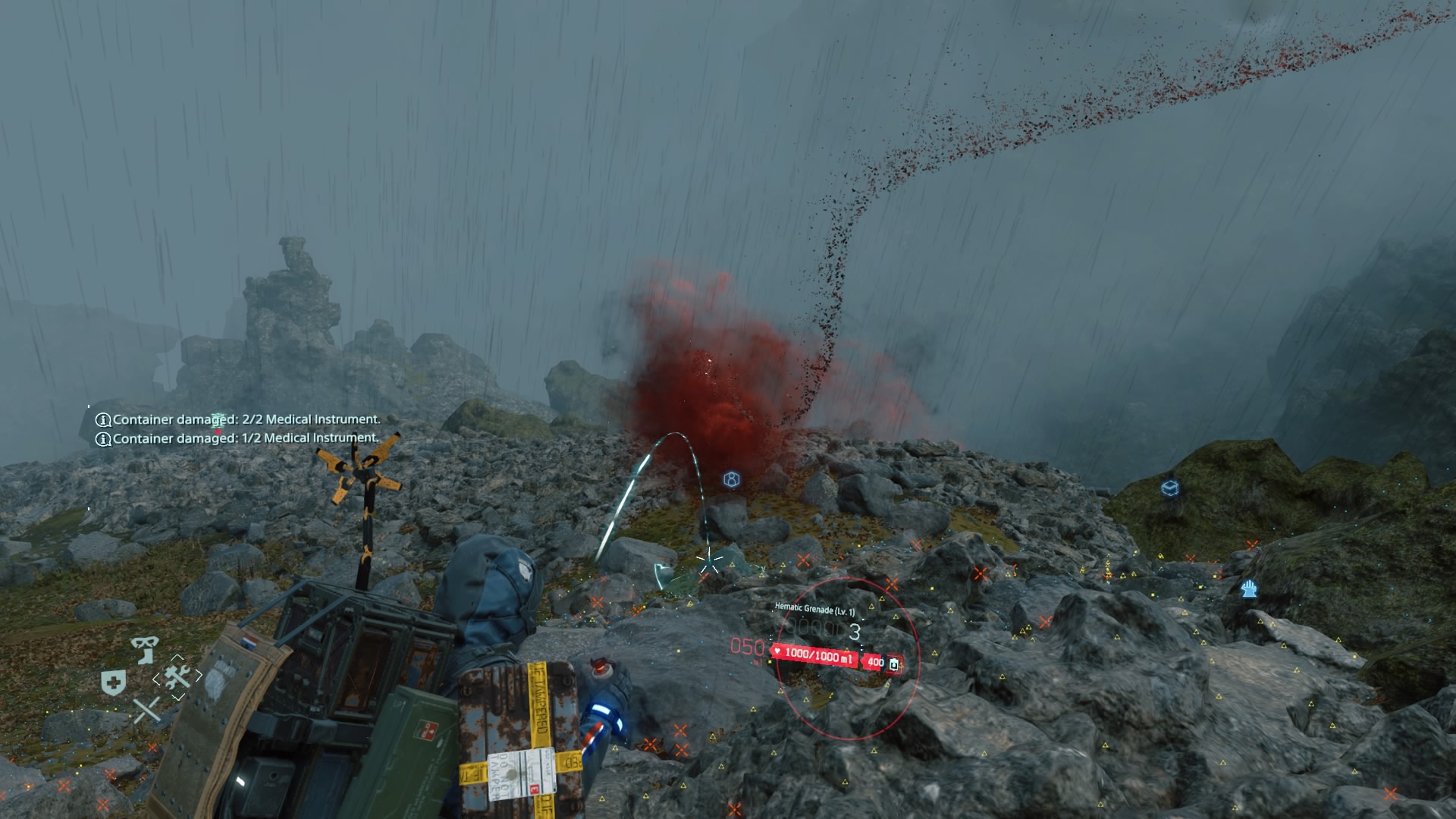
BTs’ presence in an area is signaled by Timefall, which manifests in the form of rain or snow. This mysterious precipitation rapidly ages anything it comes in contact with, which unfortunately includes your cargo. As a result, it’s usually best to find shelter or get out of it as quickly as possible if you value the condition of your deliveries.
MULEs are humans afflicted with, get this, Delivery Dependence Syndrome. They are porters who got so addicted to the high of delivering cargo that they hunt other porters, trying to steal their cargo to deliver it themselves. Is that the dumbest thing you’ve ever heard? Because it’s up there for me.
MULEs don’t generally try to kill you, only incapacitate you with the use of stun spears. Then they’ll steal your cargo and store it in a camouflaged post box. Since the Odradek Scanner can pinpoint exactly where they stowed your crap just by hitting R1, though, it becomes pretty trivial to locate your goods if they’re pilfered.
Later on, you encounter a terrorist variant of the MULEs that are totally okay with killing you, and those are a bit more dangerous. If you have a vehicle or the Speed Exoskeleton though, you can pretty handily cruise by their encampments. Fighting them can net you some useful cargo, but it’s almost never worth taking all of them out. You can’t get rid of a MULE camp, so it’s usually better just to find a way around.
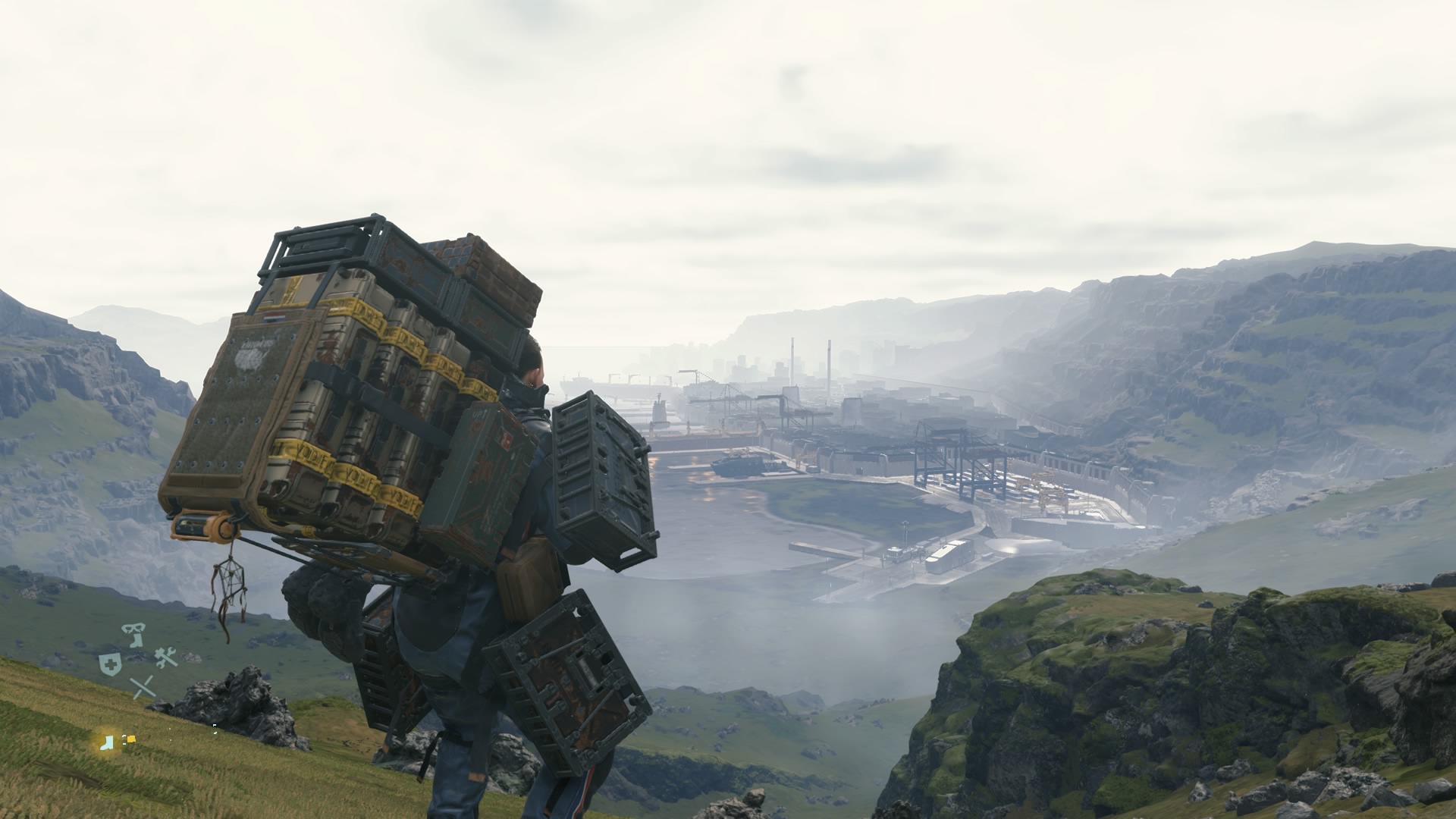
While the gameplay is more nuanced than I initially assumed, and has some pretty cool boss fights in later chapters, a large chunk of Death Standing is simply delivering packages. If that sounds boring and tedious, that’s because it is. It becomes even worse toward the end of the game, where your comrades insist you trek all the way back to the East coast from the West for extremely nebulous reasons. This took me almost an hour, and I was pissed off the entire time.
Toward the end of the game, there’s even a setpiece where Sam is stranded in a certain location, and has to run forward until he collapses from exhaustion just to receive the next morsel of exposition. I’m not kidding when I say you have to repeat this process three or four times before the sequence ends, and I am convinced Kojima was taking the piss.
Speaking of piss, did you know that Sam Porter Bridges has special pee? Yeah, his bodily fluids repel BTs due to…actually, I’m not entirely sure why. Apparently, he’s just a very special boy. So the helpful fellas at Bridges decided to synthesize grenades made not only out of your urine, but also your fecal matter and gamer girl bath water.
He can also use his blood with a few different weapons, which draws directly from his hit points. Thankfully, by equipping blood bags, you can slowly replenish your health during engagements. Remember when I said traveling light was usually the best policy? Well, there’s an unfortunate reason for that.
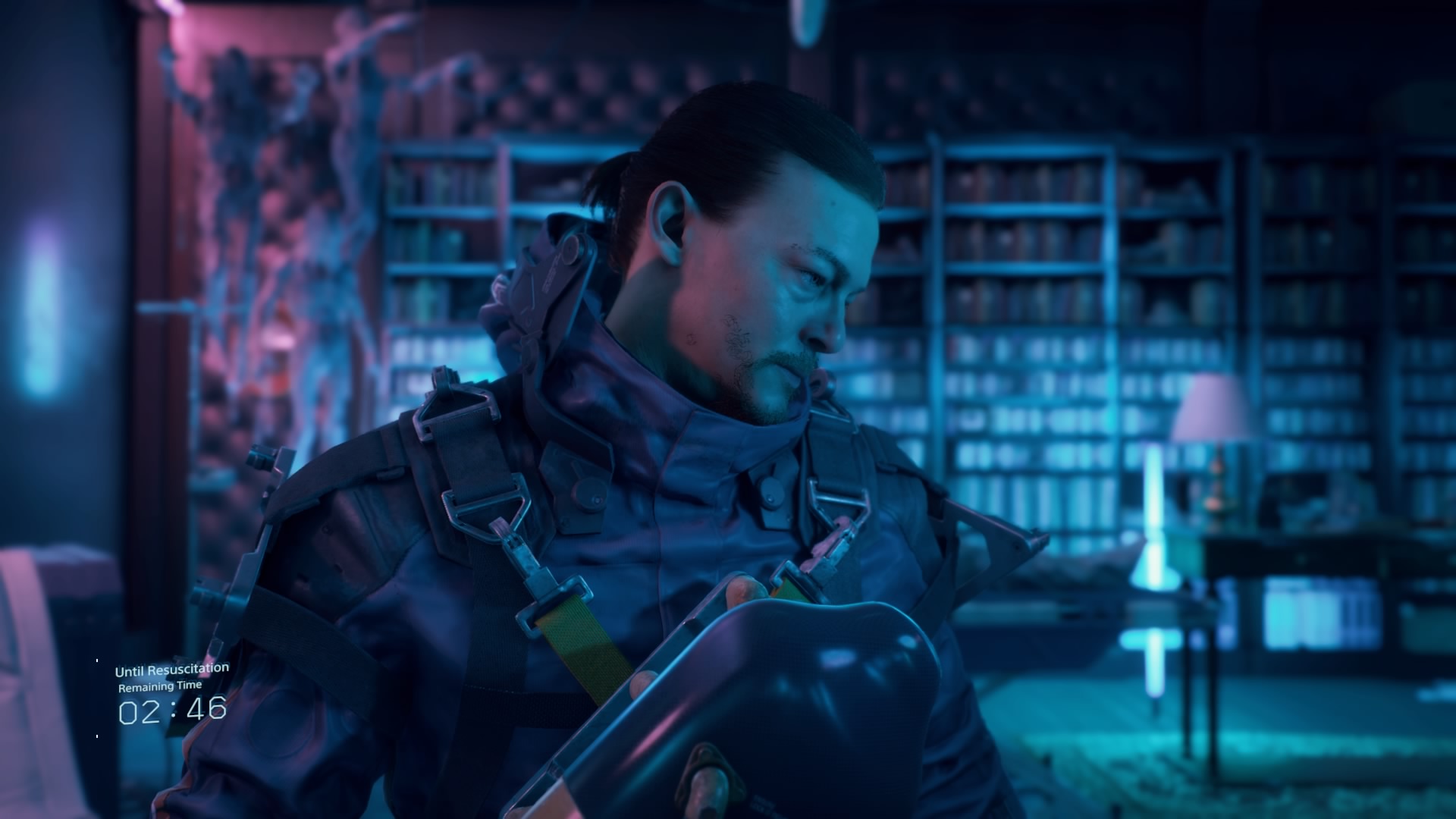
The first big boss battle was looming, and I’d been warned about it. As a result, I loaded up on weaponry and healing items, and was ready to see my preparedness pay off as I blasted a giant BT’s ass with a million hematic rounds. However, once I got into the battle, I noticed there were weapons all over the battlefield, literally strewn about in every place I looked. Online players would even occasionally pop up to toss me a blood bag or an assault rifle.
I was not being rewarded for preparing—in fact, the game was doing the exact opposite of that. From that point forward, I stopped even carrying weapons, knowing full well that when I needed them, they’d miraculously appear. This worked out for me perfectly, and I was able to complete the game using the same strategy the whole way through.
In a way, this makes sense, as it would be impossible to defeat some of the mandatory boss fights if you went in with your pants down. However, I can’t help but feel like there could have been a better way of doing it. Boss events become a lot less thrilling and challenging when you easily beat them with 10 rocket launchers you found just lying on the floor.
Likes are awarded for delivering packages successfully, which can be viewed as experience, in a sense. If enough boomers on Facebook like you, you rise in porter rank, and get boosts to your stats as a result. So, I guess Sam is cool working for exposure? Must be a tough job market.
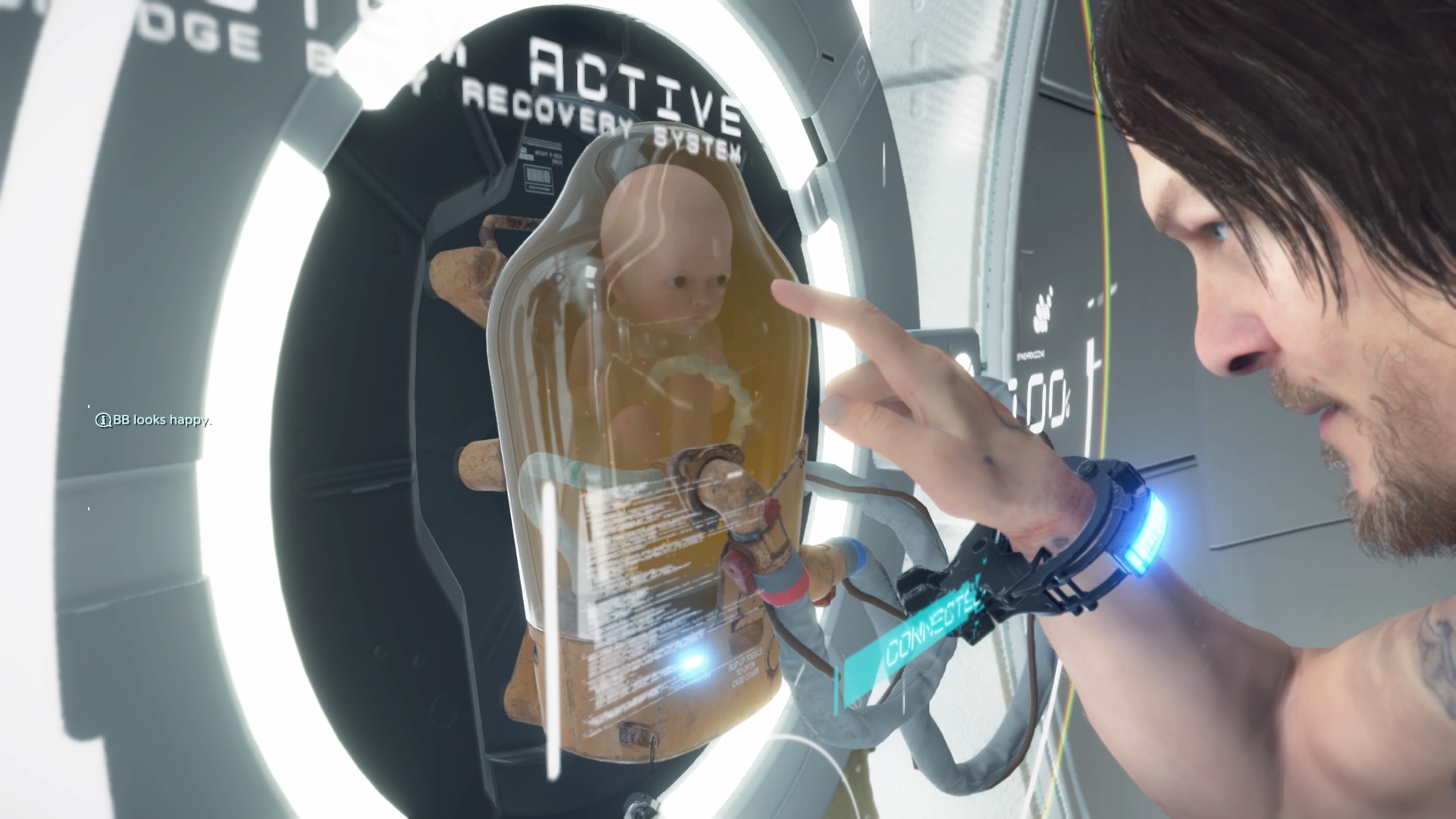
You can spend these likes on other players’ structures. Did that bridge save you a slog through a river? Like! Did that zip line connection all the way up on the top of the mountain rescue you from a twenty minute-long hike? Spam that sumbitch with likes. This mechanic encourages people to put things in useful places not only for themselves, but for others.
Aaaand I never used it. By the time I played, there were so many other player structures to utilize for my own benefit, that I never had to build anything for myself, save for a few exceptions. Most things are built from an item called a PCC, which is cool in itself. The game doesn’t explain how to use them very well, however, so it took some fiddling before I was confident with the building UI.
I mostly just slapped down generators to fill up my Reverse Trike’s battery, and the occasional Timefall Shelter. I did receive likes for these, but since I was traveling light most of the game and using vehicles, I never really noticed the stat boosts that leveling up was bestowing upon me.
Realistically, with you running around so much, your boots wear out and you get pretty tired. Synthesizing new boots alleviates the former, and resting in your private room alleviates the latter. If you’re in a pinch, and far away from the nearest rest stop, you can thankfully take a swig from your trusty Monster Energy flask! It somehow refills as you go, to boot. Yes, Sam has a magically refilling flask of Monster Energy drink. That is a thing in this game.
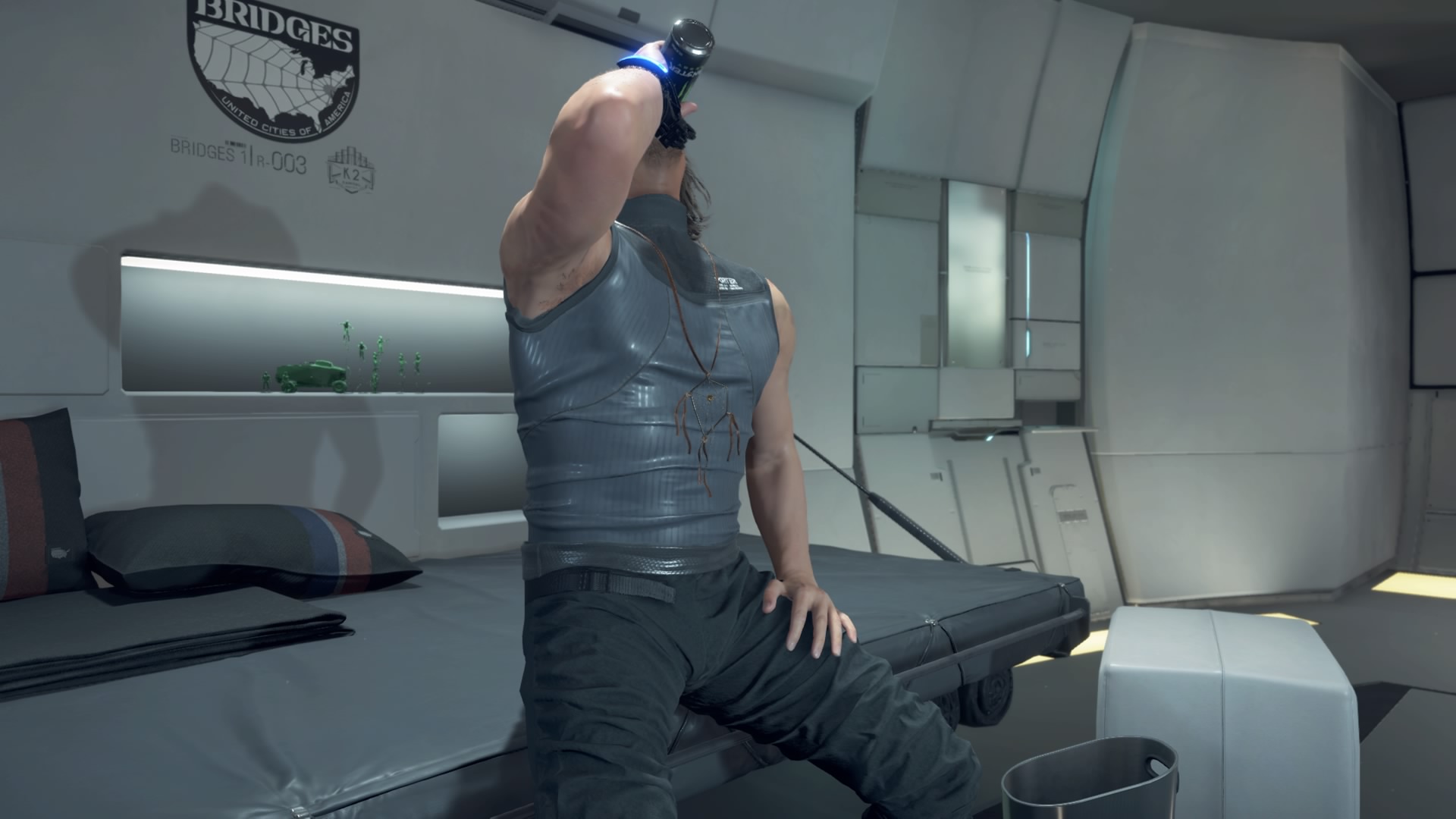
That’s not the only product placement that’s been dropped rather unceremoniously into this game either. When you take a dump in your shower/toilet combo (which I actually kinda wish was a thing), the glass wall obscuring Norman Reedus’ pooping frame has an advertisement for his travel show on AMC. This is a bit odd, considering the fact that all American infastructure has allegedly been destroyed, and there’d be no real way to watch network television, but hey.
So, enough about the gameplay. How’s the sound in Death Stranding? Well, the acting is honestly superb. A lot of A-list Hollywood actors appear in this title, and they all crush it with the strange, confusing material they’ve been given. The choice of casting is a bit odd, but I’ll get into that more in a bit.
The music is either great or terrible, depending on your preference. I was mostly ambivalent toward most of the tracks, save for a few bangers. I’d say a good ninety percent of the soundtrack is done by Low Roar, and if you aren’t a huge fan of them, you’re gonna be pretty disappointed. The usage of the songs is a bit strange, too—they mostly just…start playing as you’re out and about, seemingly at random.
The sounds of weapons and gear you use is pretty satisfying. Guns all pack a bassy punch, and the exoskeletons make an aptly mechanical-sounding whine as you trek along. The sound when you get spotted by MULEs is pretty intimidating at first too, even if they really aren’t.
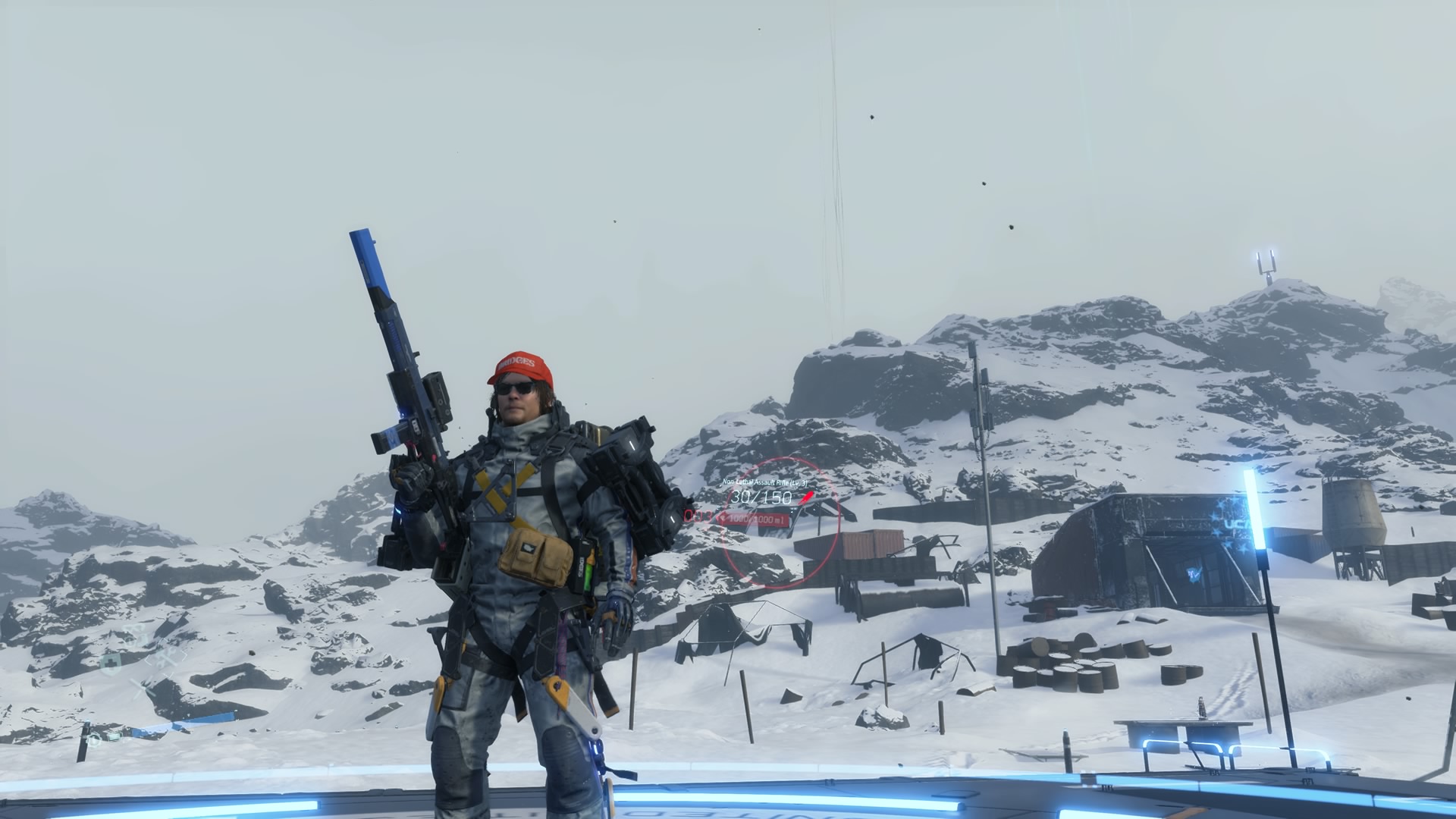
About the casting, though: It’s really weird. Deadman, one of the characters you regularly interact with, is played by Guillermo Del Toro, but not voiced by him. So they literally mo-capped Guillermo, then dubbed him over with a different voice actor. It’s the same with Heartman (noticing a naming pattern here?), who is motion captured by Nicolas Winding Refn, the director of Drive. He’s voiced by someone different entirely, though.
It kinda just seems like Kojima wanted to have a bunch of famous people in his game. In various cameos, you can find Junji Ito, Conan O’Brien, Edgar Wright, and even the Dorito Pope himself, Geoff Keighley. Of course, you also have Norman Reedus and Mads Mikkelsen in the main cast, who are pretty big stars in their own right.
The presentation of Death Stranding is undeniably slick, though. Everything looks great, whether you’re enjoying beautiful vistas, snow-covered mountains, or even BT arenas covered in what looks like tar and dead fish. The monsters and mechanical designs on display are pretty awesome, though that’s not much of a surprise with Yoji Shinkawa on board.
Performance was decent. On a base PS4 model, I barely noticed any slowdown or major bugs. The only time the framerate dipped a tad was during heavy Timefall, or when I’d open up the terminal at a new station. Other than that, it remained pretty consistent.

How do I even begin to talk about the story of Death Stranding? It’s…weird, and incomprehensible, though things do wrap up somewhat toward the end. Sam Porter Bridges is given a mission by the president to reconnect America and make it ‘whole’ again. To accomplish this, you deliver pizzas and eat bugs.
Speaking of eating bugs, there’s a character that appears rather frequently in the story named Fragile. She’s pretty much always eating bugs, known as Crytobiotes, and tries to get Sam to enjoy this delicious delicacy with her. The whole time I was playing, I kept calling her Greta Thunberg.
She has one of the lamest lines in recorded history, too. “I may be Fragile, but I’m not that fragile.” She says it a few times during the story, and it made me cringe every time. The dialogue was definitely not the best in this title, but the overall narrative manages to hit some surprisingly somber and serious tones. Lots of stuff with babies, which was a bit of a cheap shot for me, since I’m a new father myself.
Not trying to get into spoilers too much, as I do think the story should be experienced for one’s self, but the buildup to the ending was giving me some serious Evangelion vibes. There’s even a part that looks eerily similar to the famous beach scene at the ending of EoE. I’m not sure whether to call it an homage or a ripoff.
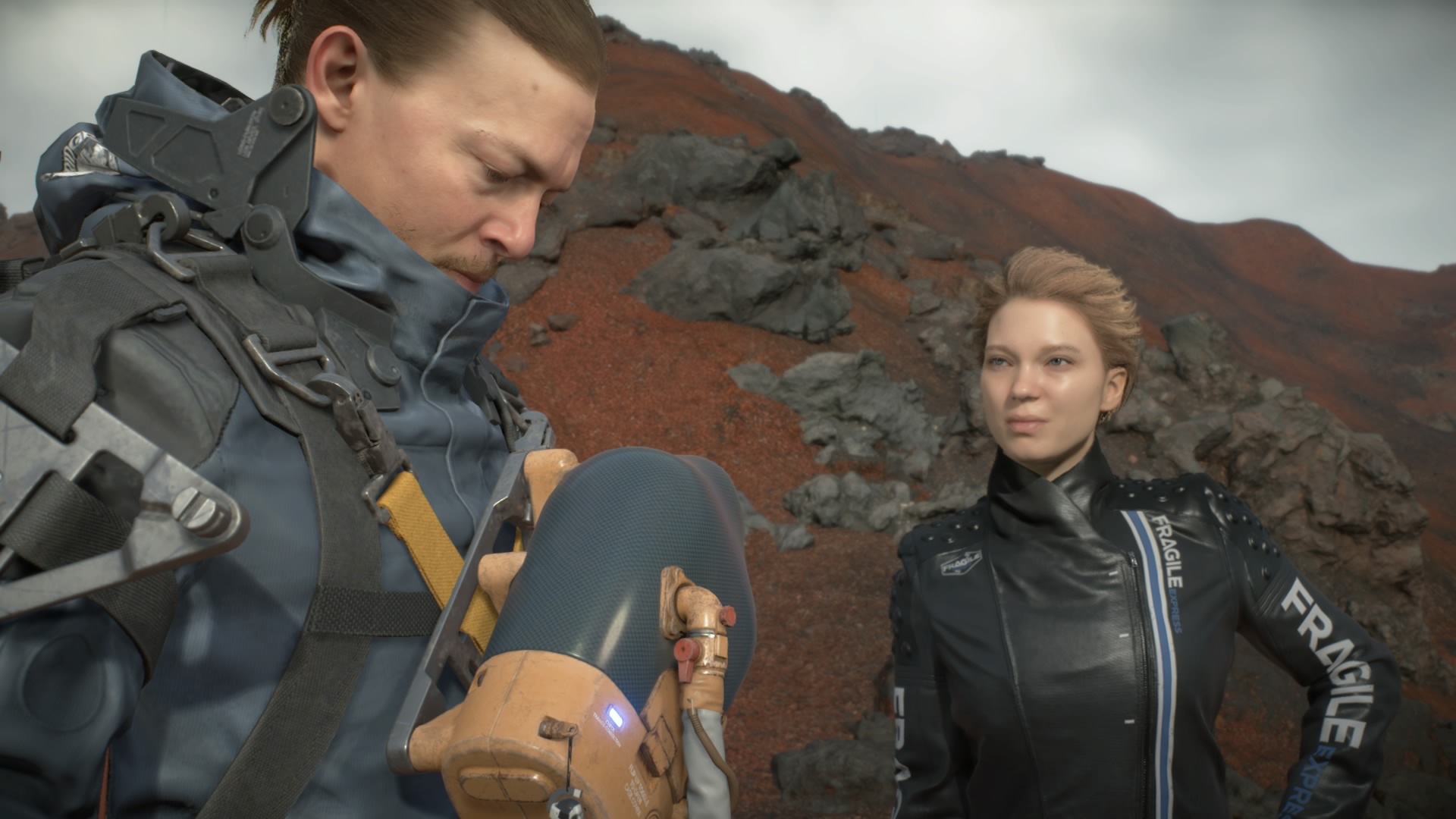
There’s also about a million terms to keep track of while playing DS, making it feel almost like a George R. R. Martin book. There are Bridge Babies, Beached Things, The Odradek Scanner, Timefall, DDS, Hematic weapons, Homo Demens (hee hee), MULEs, Strands, Chiralium, the Q-pid, Voidouts, Extinction Entities, Cryptobiotes, DOOMs, Repatriates, Necrosis, Trance Connections, Has and Kas, The Seam, and probably a few others I missed.
It’s just a lot to keep up with, and it doesn’t help that most of the story is told through some rather dry exposition. It’s mostly just characters standing in a room telling you things, which can get old pretty fast.
The characters all have pretty laughable names too. Why is he called Deadman? Because his body is stitched together from a bunch of cadavers. Why is this guy called Heartman? Because he has heart attacks. Why is this chick called Mama? She has a baby. Why is this guy called Die-Hardman? He’s a big Bruce Willis fan, obviously.
There’s some good hidden in all the Kojima nonsense, but you’ve definitely got to sift through a lot to get to it. When the gameplay is as repetitive and tedious as Death Stranding’s, though, it doesn’t exactly make you want to push forward to get to the next story segment. I won’t lie, there’s definitely satisfaction to be found when you get that new piece of gear, but all it does is let you walk around the mostly empty game world a tiny bit quicker.
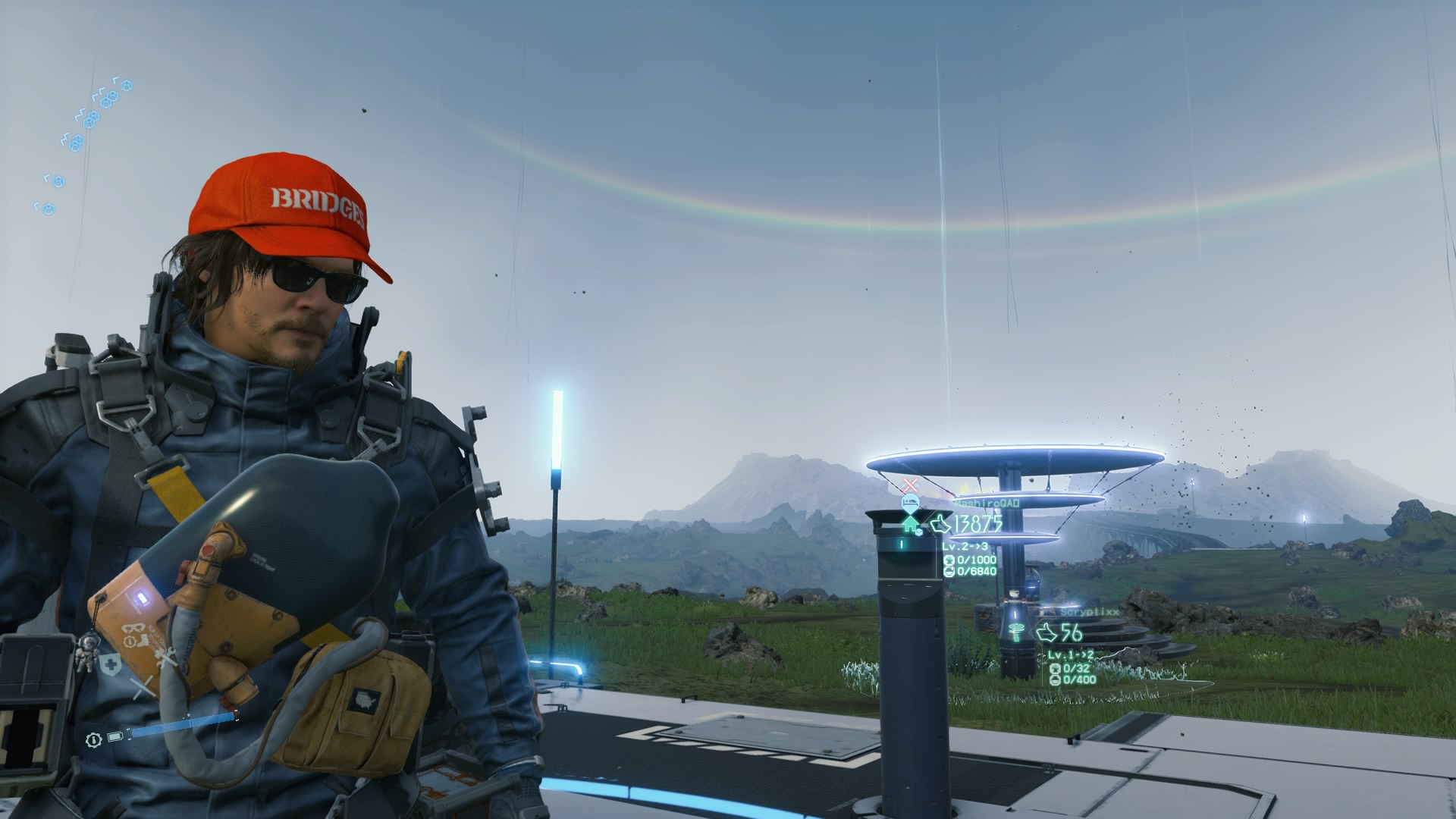
It’s for these reasons that I can’t recommend this game as an overall package, though I still think the story is worth experiencing, if only to see naked Mads Mikkelsen crawling at you covered in goop.
With boring package delivery-based gameplay, a weird and convoluted narrative, music that sounds like it came straight from Kojima’s Spotify playlist, and frequently cringey dialogue, it’s safe to give this one a pass unless you find it on deep sale later on.
In a way, I respect Kojima for coming out with something he had to know a ton of people wouldn’t like. At the end of the day, though, I just wanted to have fun playing video games, and slogging through snow for a half an hour just to deliver a jar of bugs to someone isn’t my idea of entertainment.
Death Stranding was reviewed on PlayStation 4 using a review copy purchased by Niche Gamer. You can find additional information about Niche Gamer’s review/ethics policy here.